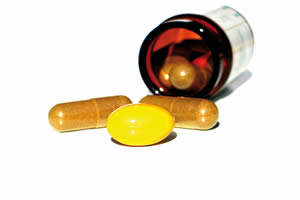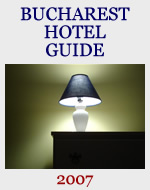No site for new pharma
Romania is not favoured for a greenfield site for pharma production, finds Ana Maria Nitoi
 |
|
|||||||||||||
Large pharma companies with few but efficient production facilities and high sales worldwide are not interested in greenfield production in
Romania.
If they cannot totally cover the demands of all markets through this business model, in certain niches, these companies will partner with a local producer.
General manager of pharma research company Cegedim Petru Craciun does not expect greenfield production in Romania soon because the local market is not attractive enough for such a move.
He believes that only a producer of generic medicine could be interested to start such a facility in Romania at some point. Generic companies use lower technology and can exploit better the shorter distance between the factory and consumers.
Country division head at Bayer Romania Catalin Radu agrees that greenfield production is not sustainable in Romania. The country has a cheaper workforce than most in the EU, but the pharma sector uses massive technology, which means labour costs are not a significant part of total expenditure.
“The local pharma market is just striving to reach the small to medium size inside the EU and it should not be over-estimated,” Craciun says. Smaller countries such as Slovenia, which has a pharma-producing tradition, are more attractive than Romania. Production costs in Romania are also increasing.
“Romania is deficient in terms of national programmes supporting greenfield investments and the state doesn’t seem to intend to change this situation very soon,” Craciun adds.
Pharma companies focused on innovation in production prefer to produce in their home country. “Most companies are trying to improve or enlarge their existing production facilities,” says general manager of Schering-Plough Central East Tudor Panu. Other pharma giants choose India or China for greenfield investments, which are cost-effective locations.
Greenfield investments in production facilities in Romania are not a priority for Roche Romania. “We were offered to enter the bid for [state generic medicine producer] Antibiotice Iasi’s privatisation, but we were not interested because our focus is not on generics or OTCs, but on innovative products,” says general manager of Roche Romania Dan Zamonea.
Meanwhile Zentiva analysed the market and considered that a buy-out was more profitable than a greenfield, says Jiri Michal, CEO of Zentiva Group. The Czech brand purchased pharma manufacturer Sicomed in 2005.
Icelandic pharma company Actavis entered the local market by purchasing manufacturer Sindan in 2006. A few months later Actavis intended to invest 50 million Euro in a greenfield investment in Romania. In the end Actavis bought a factory in Italy, shelving its plan for Romania. General manager of Actavis Romania Laurentiu Scheusan said then that a greenfield investment would have taken at least four years. A buy-out saved time.
Meanwhile Ozone Laboratories prefers to cooperate with local producers. “For the moment we aren’t interested in having our own production facility in Romania,” says Christopher Henwood, CEO of Ozone Laboratories Group.
LaborMed Pharma, one of Romania’s largest private pharma producers along with Terapia Ranbaxy and Actavis, is interested in acquisitions both in the Romanian market and other markets. “We haven’t started to negotiate anything yet,” says CEO of LaborMed Pharma, Stephen Stead.
For the moment LaborMed is in the process of acquiring products through licensees. “This is a shift in the LaborMed Pharma strategy, which used to develop products in-house,” adds Stead.
Pharma producers such as Zentiva are constantly focusing on acquisitions especially in central and eastern Europe. “Only sufficiently fit, big, flexible and effective companies with wider geographic spread will survive,” says Zentiva’s Michal.
At the moment major local producers encounter several impediments to fast-paced development. Except for Antibiotice Iasi, all have foreign ownership and most are still in the process of restructuring. The increased costs in energy and raw materials, plus increasing salaries are further handicaps.
In 2008 the pharma market in Romania witnessed a shock slowdown. The market registered only a four per cent growth in the first quarter compared to the 25 per cent increase in the same period last year. The decline started in the second half of 2007, but few pharma players expected such a rapid deceleration. The depreciation of the RON (leu) was blamed. The fact that the National Health Insurance House (CNAS) slowed down its payments to the pharma companies and distributors also contributed.
Sales of drugs in pharmacies are still up, increasing by 10.4 per cent in the first three months of 2008, compensating for the 25 per cent decline in sales through hospitals. This was also affected by the state’s decision to restructure the delivery location of prescription medicines to patients from hospitals to pharmacies. This includes medicines against diabetes, cancer and post-transplant medicines. In pharmacies, the prescribed medicines (RX) sell three times better than over-the-counter (OTC) products.
Only the Ministry of Health’s national programmes allocate free medicines to patients. The Ministry’s budget for this remains unchanged, but what changes is the therapeutic areas where this money is chanelled. In one year, more subsidies are available for neurological disorders, while in the following year this may be cardio-vascular. Therefore a patient with heart disease may receive free medicine for one year, and then have to pay for it in the next, regardless of the cost, which can be in the 1,000 of Euros per month.
For other prescription drugs, the Romanian state will only pay between 50 and 100 per cent of the lowest value of the medicine within the drug category, which is a generic form.
Last year the pharma market, estimated at 1.65 billion Euro, had an increase of 11.2 per cent compared to the 19.3 per cent growth in 2006. Cegedim expects a five to ten per cent market growth in 2008.
Some importers and distributors are starting to focus more on OTC products than prescription (RX) medicine to reduce dependency on the Ministry of Public Health and the National Health Insurance House (CNAS).
This is because OTC products have unregulated prices and benefit from full cash payments, while RX products depend on the authorities paying on time. The RX prices are fixed by the Ministry of Health after a negotiation with the pharma producer. Here is a problem. The exchange rate at which CNAS subsidises medicines has not been updated since one Euro was only 3.3 RON. At the present time, one Euro is sold for 3.67 RON.
The RON’s depreciation is about ten per cent. This means pharma importers and distributors and Romanian branches of international pharma companies bringing drugs into Romania start with a loss of ten per cent. Country division head at Bayer Romania Catalin Radu says that, in general, the prices of the drugs are increased by 15 to 20 per cent to reach a profit margin of about five to ten per cent.
Another disadvantage of selling RX medicines to the Government is the huge delays in payments which are usually reimbursed in 180 days.
Distributors prefer to buy in RON or USD the medicines from the local producers instead of purchasing them in Euro or Swiss Francs from abroad because of the exhange rate losses.
Focus on over-the-counter
“My strategy is to run as much as I can from the Romanian authorities and to focus more on over-the-counter products,” A&D Pharma’s CEO Dragos Dinu, the owner of Sensiblu pharma chain, tells The Diplomat. “Nobody ever thanked us for doing a free service to this country by selling drugs at a loss.”
The tendency of some importers and distributors to focus on OTC products may be more efficient in the short term. In the medium and long-term this could bring saturation for OTCs and a crisis of availability for prescribed medicines.
At present more than 70 per cent of the expenditure on drugs is directed to original, or branded products. LaborMed’s Stephen Stead says that the Ministry of Health should focus on generic medicines. “Right now there are many good generics on the market that are a good alternative to some of the originals financed by the Ministry,” he says. “By encouraging the use of generics, huge saving in drugs bills can be made.”
But Roche’s Dan Zamonea sees an improvement in regulations and funding decision on the Romanian healthcare market. “The strategy of the Ministry of Public Health has become clearer in the last years and public decisions such as the National Healthcare Evaluation Program or the funds allocated to help general practitioners buying computers are a big step towards modernisation,” Zamonea says.
Health lottery
A&D’s Dragos Dinu says the present and former Ministry of Health lack a long-term national health strategy. Such a plan is necessary for the coherent development of pharma companies and retail chains.
Romanian tax contributors must pay a high percentage (12.5 per cent) of their salaries every month for health insurance, but this does not cover all the costs of treatment.
All medicines should be treated with the same degree of subsidy, argue observers, otherwise it is a lottery as to whether a patient will have to pay for treatment.
“More expensive medicines, such as for heart disease, should be insured by the state as long as medicines for stomach problems, for example, are also paid for by the authorities,” Dinu says. “We should not let the state choose who dies first - a patient suffering from an ulcer or from a heart attack.”
The Diplomat tried to contact the Minister of Health for an interview to discuss these critical issues, but he refused to speak to us.
Bayer Romania’s Catalin Radu adds that there is also a lack of interest from the authorities. He says that, in some cases, new patented drugs enter the Romanian market two or three years after they are discovered and ready to be used.
“If we only consider medicines against potentially fatal diseases like cancer, two or three years could make the difference and save lives,” Radu adds.
Sophisticated moves
The pharma market has evolved in the last ten years from a developing market where antibiotics and medicines for the digestive system were the most ubiquitous to a more developed stage where drugs for cardio-vascular and nervous systems have a higher proportion.
Bayer Romania’s deputy general manager Catalin Radu says that for a multinational the Romanian market is not the best place to operate because the sales volume is still low, with a total of only one billion Euro last year.
“The pharma consumption per capita is still very low and I believe it is caused by the reduced public financing of the healthcare system,” he adds.
In most EU member states the budget allocated to the healthcare system reaches an average of six per cent of the state’s GDP. In Romania, the Ministry of Public Health pledged this year the highest percentage of GDP in its post-1990 history, to almost 4.5 per cent. The pharma spending per capita in 2006 in Romania was 58 Euro, lower than Hungary’s 142 Euro, Slovakia’s 107 Euro, Poland’s 76 Euro and Turkey’s 65 Euro.
But the pharma market is the region’s most dynamic, says Jiri Michal, CEO of Zentiva Group. The pharma spending per capita between 2002 and 2006 witnessed a 36 per cent increase in Romania compared to Ukraine’s 28 per cent or the Czech Republic’s 11 per cent.
Marketing wins
Since April doctors must prescribe the brand name of drugs to patients and not the name of the active substance in the drug. This situation could lead to growing sales of branded medicines against generic ones.
Even though Roche produces only original branded drugs, Dan Zamonea says the company’s sales would not be significantly influenced by the new regulations, as most of the companies’ sales are through national programmes.
But this story is different for pharmacies.. “No doctor will ever prescribe the cheapest medicine because this would mean pharma firms would no longer give certain incentives to doctors like paying for their plane tickets and accommodation for a global medical summit, as happens now,” says A&D’s Dragos Dinu.
However the National Health Insurance House will continue to pay only the lowest price for any drug in that category and not the full ammount of a more expensive branded product specified by the doctor. “Where is the authorities’ care for the citizens in this decision?” Dinu asks.
Tudor Panu of Schering-Plough Central East believes distributors will focus only on those products, companies or therapeutic areas “where the money comes from” and where they see a consensus on quality emerging from patients, producers, doctors and authorities.
It is likely, however, that the turnover of pharma companies will be decided in the doctor’s office and not at the pharmacy counter.

















